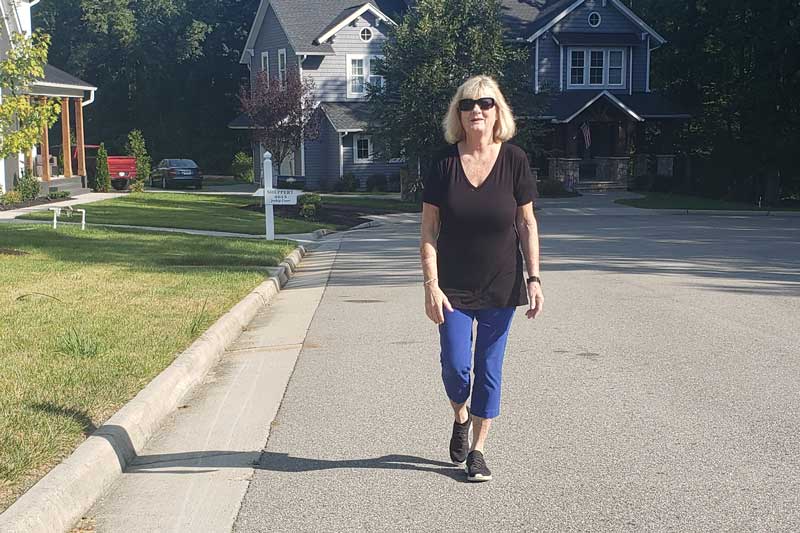Cheryl Wilson's PAD Story

Cheryl Wilson thought she was in great health.
She exercised regularly, watched her diet and didn’t have high blood pressure or high cholesterol. She was also a Weight Watchers coach, promoting a healthy lifestyle to her clients.
So when Wilson was diagnosed with peripheral artery disease (PAD) 13 years ago, she was shocked.
Wilson didn’t know it at the time, but as a former smoker who had a family history of heart disease, she was at risk for PAD, a condition in which a buildup of fatty plaque deposits in arteries restricts blood supply to leg muscles.
It took several weeks for Wilson to learn that the pain she was feeling when walking while pulling a handcart for her job wasn’t a pulled muscle. It was only after she got an ultrasound and ankle-brachial index test that she learned the source of her discomfort.
“When I was diagnosed, I felt very isolated,” said Wilson, who lives in Chesapeake, Virginia. “I didn’t know anyone who had it, so I had no one to talk to about what I was going through.”
More than 8.5 million people in the U.S. have PAD. People who smoke are twice as likely to have it. Black people and those with diabetes are also at a higher risk for the disease. Heart disease, high blood pressure and high cholesterol are other risk factors.
Common symptoms include burning, aching, cramping, numbness, fatigue or discomfort in the leg or hip muscles while walking.
Wilson, who initially couldn’t find many resources when she looked for support groups, serves on the steering committee for Vascular Cures, an organization that promotes research and education about PAD.
“PAD is still very much underdiagnosed,” said Wilson, who regularly shares her story with other patients. “So many people have it and think it’s an old injury or that they’re dehydrated. People need to get educated about it so that they can take better care of themselves.”
About 150,000 leg amputations are performed in the U.S. each year, according to the American Heart Association. Most are for people with PAD and diabetes. But amputations can be prevented by working closely with a doctor at the first sign of PAD. The disease can also be managed by making lifestyle changes such as quitting smoking, controlling diabetes and high blood pressure, engaging in physical activity and eating a heart-healthy diet.
Since learning she had the disease, Wilson has reduced her sugar and beef intake, walks as much as possible and doesn’t miss a chance to educate her family and friends about the disease.
Wilson encourages people with PAD to seek a second opinion and find a doctor with whom they feel comfortable.
“You need to do everything your doctor tells you to, but doctors or a pill can’t do everything,” she said. “You need to trust your gut and learn as much as you can.”
Wilson also advises people with PAD to just move.
“I like to challenge everyone to move their bodies 30 minutes a day more than they already do,” she said. “We all need to show our heart some love.”
Hear Cheryl and medical experts in this podcast: Understanding PAD: One Step at a Time






